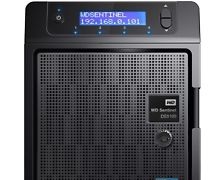Welcome to the first blog in our new column. This column is dedicated to hardware, software and services for the Small and Medium Business (SMB) and commercial midmarket spaces. In most countries companies too small to be generally called enterprises make up over 99% of employer businesses, yet are often the poorest served by technology vendors and technology journalism. This is Tech for the 99%. Backups are the bane of many an IT department. Big or small, nobody escapes the need for backups, and backups can get quite expensive. Smaller organizations trying too backup more than a terabyte of data usually have the hardest time finding appropriate solutions. This is slowly changing. For many years I have avoided advocating backing up data to the public cloud. Even the cheapest backup service – Amazon’s Glacier – was too expensive to be realistically useful, and the backup software that talked to it was pretty borderline. Times changed. Software got better. Cloud storage got cheaper. A new competitor on the scene emerged in the form of Backblaze with their B2 product. B2 offers archival cloud storage for $0.005 (half a cent) per gigabyte USD. That’s notably less expensive than Glacier’s $0.007 per gigabyte. That makes Backblaze B2 $51.20 USD/month to store 10TB. That’s an inflection point in affordability. B2 and Glacier both cost to retrieve data, and they’re slow. They aren’t the sort of thing any organization should be using as a primary backup layer. It doesn’t make a lot of sense to use them to regularly restore files that staff accidentally delete, or to cover other day-to-day backup needs. Similarly, B2 and Glacier aren’t immediate-use disaster recovery solutions. You can’t back up your VMs to either solution and then push a button and turn them on...
Western Digital Make Backup Devices?
posted by Adam Fowler
Western Digital (WD) is well known for it’s hard drives. They’re one of the few remaining manufacturers and have a reasonable reputation in this market. They’ve also made great media players which again have a good reputation of ‘just working’. Being a storage company though, it makes sense that they make backup devices too, namely the Arkeia range of WD products. I’ve had a chance to check out the WD Arkeia DA2300 that they sent out to me, and it’s turning out to be a decent piece of kit. Hardware: The Box Physically, the WD Arkeia DA2300 is a modern and functional looking cube (almost a cube at least, it’s slightly longer). It measures roughly 16cm H x 21 W x 22cm L which seems pretty small for what it’s packing. The LCD screen shows the device name and IP address, and below it has a lockable front door which conceals the four hot swappable drive bays. One of the nice things about this is that there’s no screws required which some other 4 bay devices have, you just slide in a raw SATA drive. Looking at the back of the device, there’s an abundance of ports. 6 USB ports, with 4 being USB3 should cover any USB connectivity requirements. Below the USB ports are two gigabit NICs and a 3rd port which you can ignore… it’s not functional, and doesn’t appear in any spec sheets. There’s also a single VGA port, and two power holes. Two power packs are provided with the unit, so if one either fails or accidentally gets unplugged, the device itself continues to stay up. As you can see from the photo, I just plugged one in and it worked perfectly fine: Specifications: What’s Inside? Firstly, there’s two options depending on your requirements. You...


